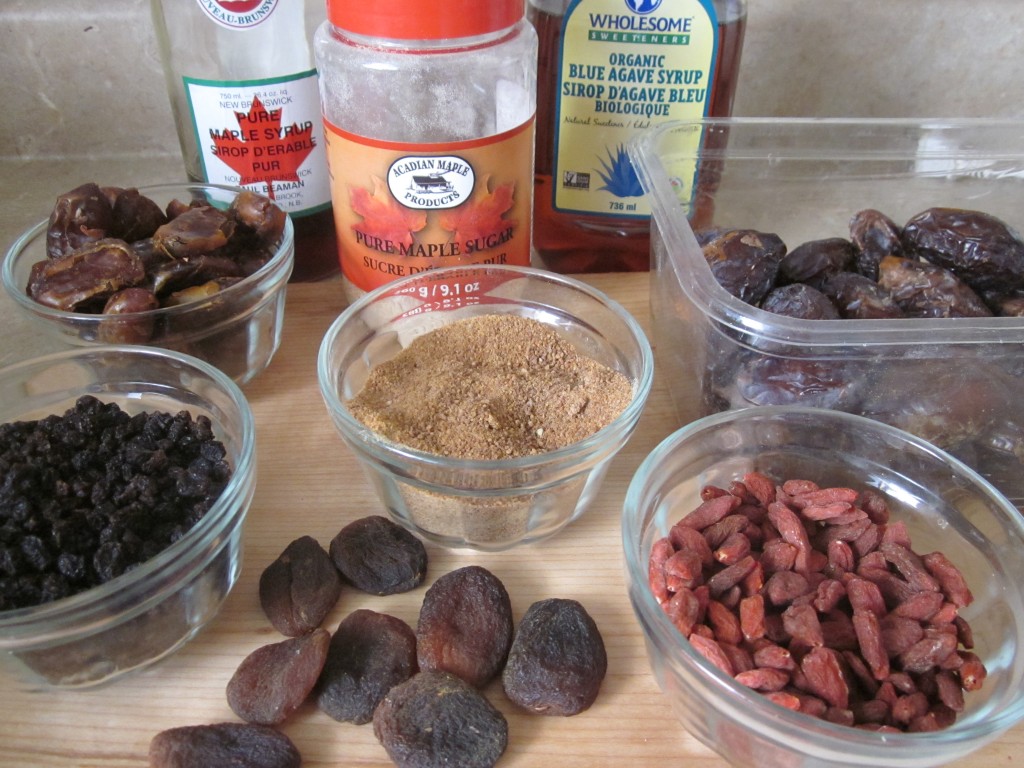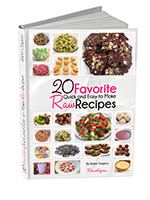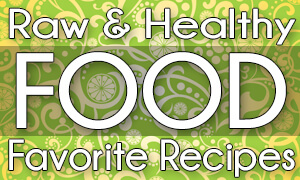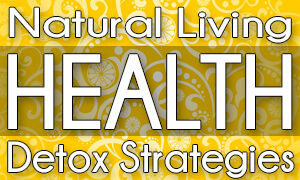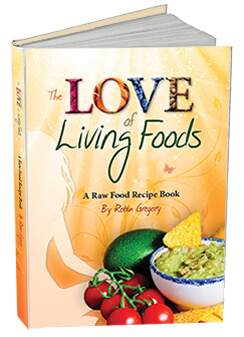Natural Sweeteners – Which are the Best Sweeteners of All
2013
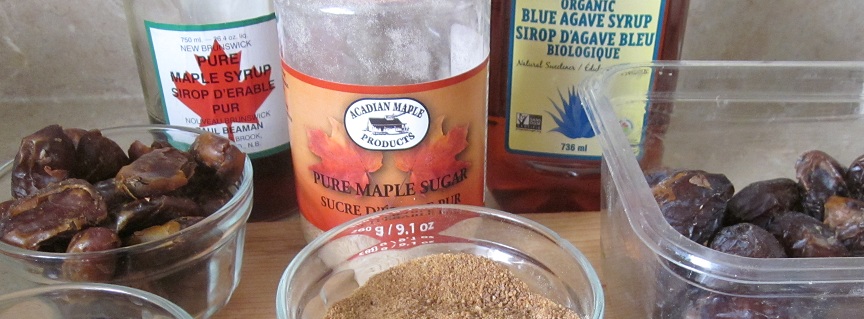
Which natural sweeteners are the most healthy sweeteners and the best sweeteners of all? This question has been asked over and over and it’s one of those questions that can have many answers, depending on how you look at it and who is answering. When I look at natural sweeteners I will take into account the sweetening effect vs the nutritional aspect.
Glucose and Sugar
I think sugar gets a bad rap, and is not as evil as it is sometimes made out to be. However, in our over-sweetened society, it is often overdone, and here is where the trouble lies. But sugar is not all bad. Glucose (sugar) is necessary in the body. It is the body’s main source of energy. Glucose is necessary for the reproduction of cells, to build protein and nucleic acids, which are found in all cells. It not only builds but helps repair tissues, necessary for growth. Our brains and nervous systems require sugar to function properly. Without sugar we couldn’t even think. Now most of us get too much, which leads to sugar being called the bad guy. But this isn’t really the case, it is just our over consumption of sugar that is bad.
Simple sugars vs Complex carbs
Not all sugars are the same. There are simple sugars (aka simple carbs) and complex carbs. The difference is mainly that the simple sugars (carbs) get broken down very easily and provide energy right away and complex carbs take longer for the body to break down and so will provide energy to the body over a longer period of time. All carbs get broken down and provide glucose. The glucose gets used right away for energy or stored away for later use. Simple sugars can give a rapid increase in blood sugar levels and so it is best to go with complex carbs over simple sugars in general.
Many fruits and vegetables are made up of what is considered simple sugars. However, because of their high nutritional content that goes along with them, they zoom up higher on the scale of best natural sweeteners. Simple sugars from fruit rate much higher as a more healthy natural sweetener than the refined simple sugars that are used in many processed foods.
Which Natural Sweeteners are the Best?
I am going to list and rate different sweeteners that I often use in my raw desserts and to sweetened my recipes, and give my reasons why to use, or stay away from, each one. Starting with the best.
Fresh Fruit – Sometimes it just takes to eat an apple or a banana and a craving for a sweet treat or dessert will just go away. Fresh fruit has lots of fiber and nutrients, along with natural sugars, to make you feel satiated quickly. If you can add fresh fruit to a dessert, this is always a plus. In my books, natural tree ripened, fresh, organic fruit is the best form of sweetener there is.
Dates and Raisins – Both of these dried fruits, along with dried cranberries, blueberries, cherries, apricots and other dried fruits are my favorite sweeteners to use. Along with the high level of sweetening power of these dried fruits comes very concentrated high levels of nutrients. With every dish I make I am very conscientious to pack as much nutrition in as possible. When the body gets enough of the nutrients it needs, you feel satiated quicker and do not have as many cravings or urges.
Honey – Always get and use unpasteurized. Pasteurized honey, which is what is found in most grocery stores would go further down on the list, at least after maple syrup. While this isn’t a vegan option, if you are ok with eating honey, this will provide lots of nutrients. I believe there is a big difference between pasteurized (honey that is heated to high temperatures before being bottled) and unpasteurized. Unpasteurized honey is often available at health food stores, farmers markets and from local bee keepers. It contains high levels of enzymes and nutrition.
Maple Syrup – This is not raw but it is one of my personal favorites. The sap from the maple tree is collected in buckets and then boiled down to create maple syrup. I love the flavor and it has been studied and shown to have high levels of antioxidants and nutrients as well.
Agave – This was touted as the perfect raw food sweetener about 6 to 8 years ago when it first came out. It is a very sweet and almost tasteless natural sweetener that comes from the agave cactus (the same one tequila comes from). Back in the day, it seemed like the perfect ingredient in raw food recipes, especially desserts, giving sweetness without much taste. It gained in popularity, but unfortunately it seems that along the way it became corrupted and now there are many claims that most of the agave on the market now is highly processed, devoid of it’s natural nutrients and high in fructose. So while it is a perfect sweetener for some desserts requiring no added flavor, like vanilla based ones, use it in moderation and with knowledge that unfortunately, most agave on the market now may not be the healthiest choice.
Sweeteners I Occasionally or Rarely use
Stevia – Ideally this should be up near the top of the list. Stevia comes from the sweet leaves of the stevia plant. I have eaten the leaves and it is incredible how sweet and wonderful they are. However, the white powdered stevia commonly found in health food stores comes from processing the leaves and I find it has a very chemical aftertaste. It is claimed to be quite healthy. I just don’t like it and never found it worked well in recipes. I also noticed that quite a few brands of packaged stevia (even found in health food stores) had other unhealthy chemicals added to it. Read the label carefully if you decide to buy and try it. Tip – for diabetics or those trying not to eat sugar, try cutting another sweetener with a little stevia.
Maple Sugar – The is maple syrup that has been boiled down to a sugar. I will use it occasionally for garnishing or if a recipe needs a sweetener that really can’t be substituted for the syrup. It is more expensive than the syrup and also more processed. Common sense leads me to think that is always best to use anything closer to it’s natural source, and here syrup beats sugar.
Coconut Sugar – is the newest coconut product to gain in popularity. It is better than white or brown sugar, and has some nutrients still intact. The down side is that the sap is collected from the flower bud of the coconut tree and so it can no longer produce coconuts. It is a hot commodity right now and a lot of coconut farmers are cashing in on this instant cash crop. Some say later the coconut tree can go back to producing coconuts but many coconut farmers say they have never seen this happen. There has already been coconut shortages and I love coconuts, coconut oil and coconut butter and so just in case, I am sticking to other sweeteners, which I prefer anyway. But this all being said, it does taste good and is not as unhealthy as many more refined sugars.
Date Sugar – This comes from dates that are dehydrated and then ground into a powder. I haven’t tried it. However, it seems like one of the more nutritional of dry sugars and a good choice for a dry powdered sugar.
Molasses and Other processed Sugars
The list from here on down are sweeteners I never use. But I am including them for informational purposes.
Molasses – is made by juicing the sugar cane and then boiling down the juice. The first boiling is often called cane syrup. The second boiling is called molasses but often has a bit of a bitter taste to it and the molasses from the third boiling is called blackstrap molasses. I should note that I ate this frequently as a child. It was a common sweetener used in our household and one I believe has some beneficial nutrients still in it. I don’t use it mainly because I prefer for nutrition and taste the above mentioned sweeteners.
Turbinado sugar – often also labelled as raw cane sugar. This is not raw. It is highly processed, but not so much as white or brown sugar. It still has a small amount of molasses left in it.
Demerrara sugar – is similar to turbinado with large irregularly shaped grains and has slightly more molasses left in it.
Muscovado sugar – is another less refined sugar. This one is still a little darker. It is almost sticky and has more flavor.
Brown Sugar – Some molasses is added back into white sugar.
The Danger Zone – The most highly processed sweeteners, and chemicals
Common white sugar is a source of empty calories, devoid of anything else other than sugar and eating it can easily lead to poor health, illnesses and weight gain. Because of this many look for alternatives or natural sweeteners that do not contain sugar. Stevia is one natural sweetener that does not contain extra calories, and this is great to use if you can find a natural source and like it. One problem I see often is that people confuse natural sugar with natural sugar substitutes.
Chemical and man made sugar can not be classified as natural. Many of the low or no calorie sweeteners contain compounds such as saccharine or aspartame, which studies have shown to be highly destructive and harmful neuro toxins. They are often added to diet sodas and many processed foods to reduce their overall calorie count. I recommend to stay far, far, far away from these!
The best idea is to go as natural as possible. Stay as close to the tree or the land as possible. The less refined the better. A little knowledge and some common sense can go a long way to boosting your health level. Go natural and feel great.
Cheers! To your health!
